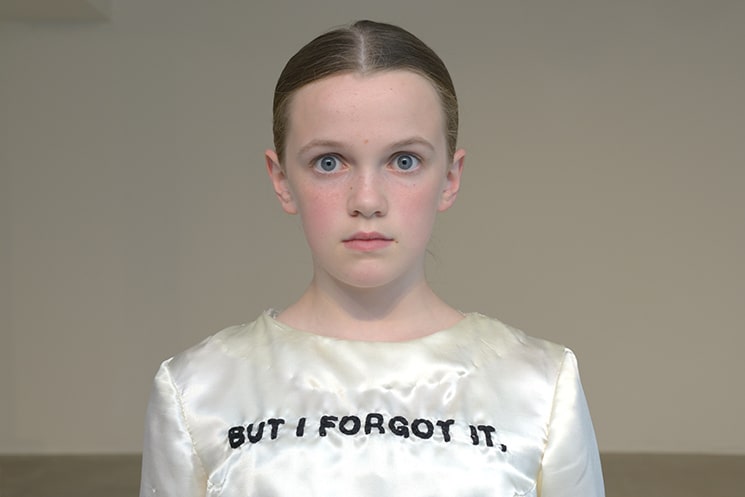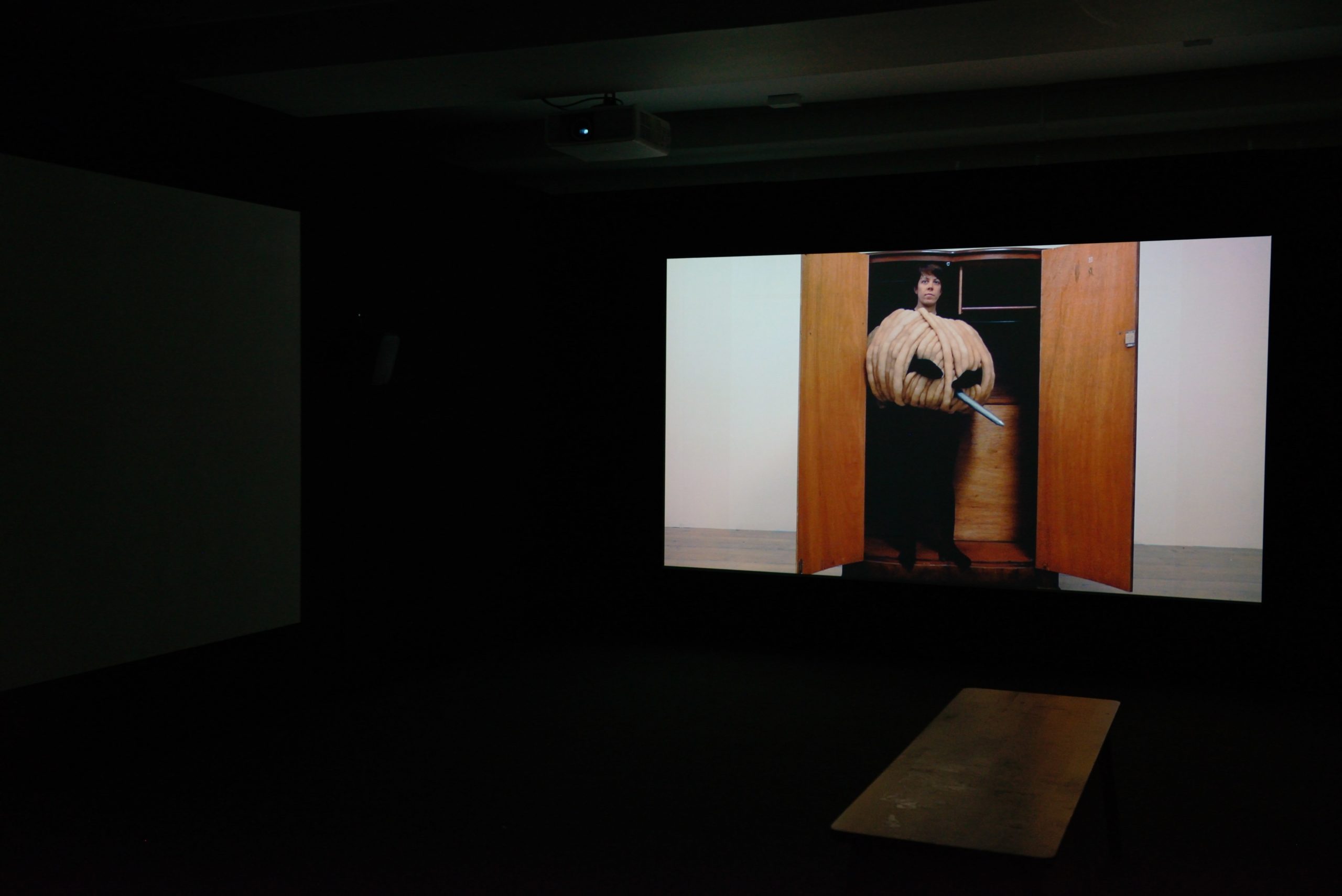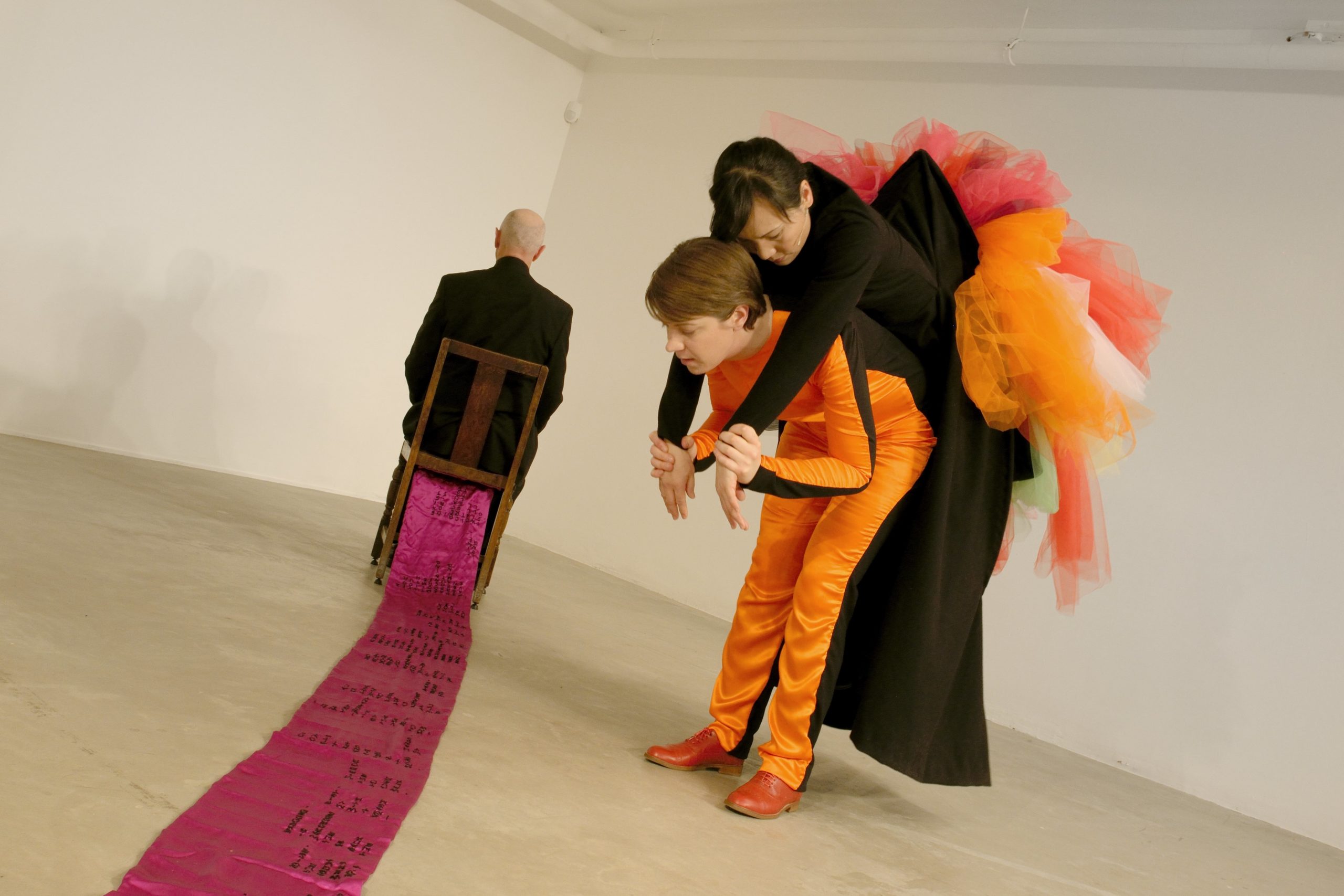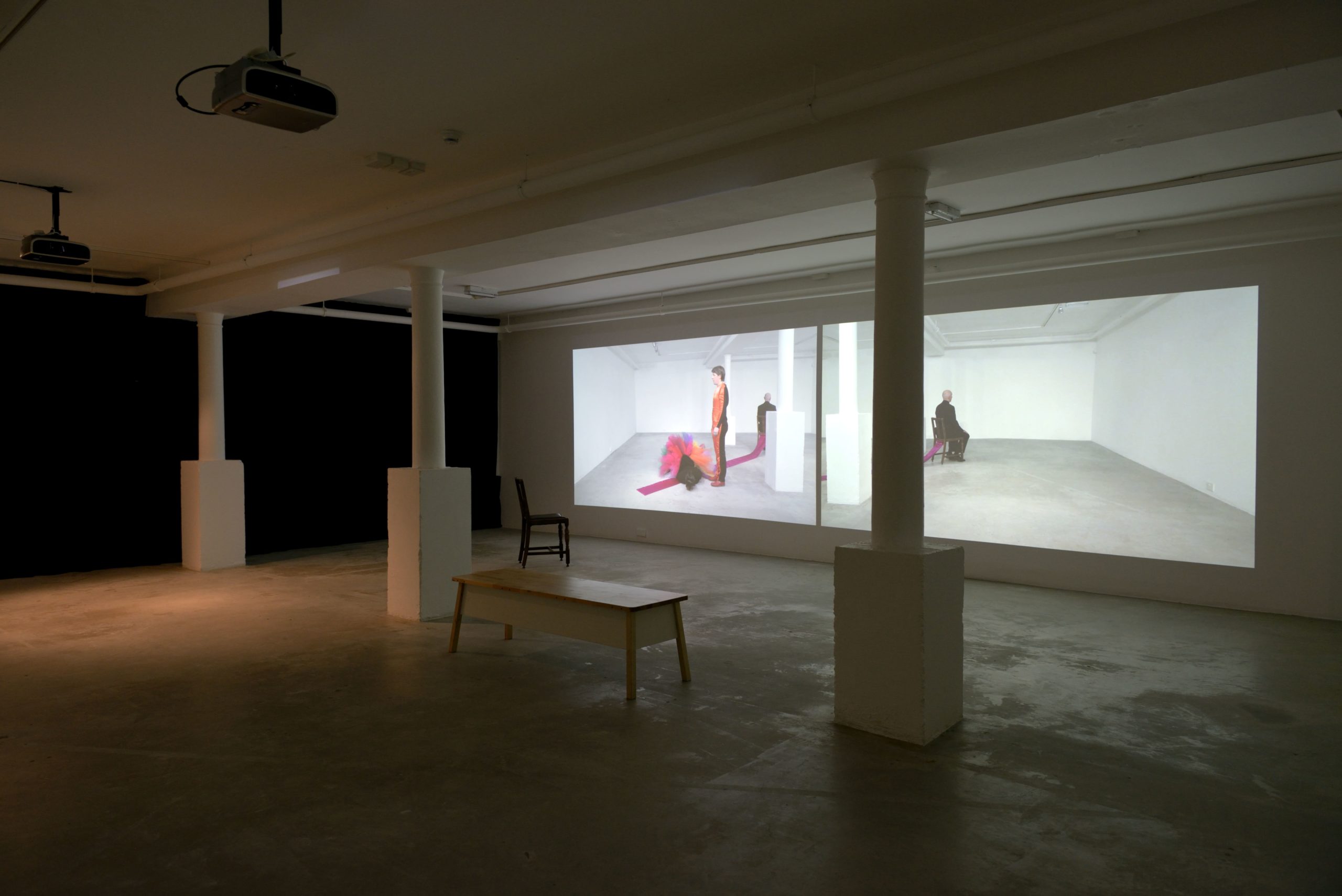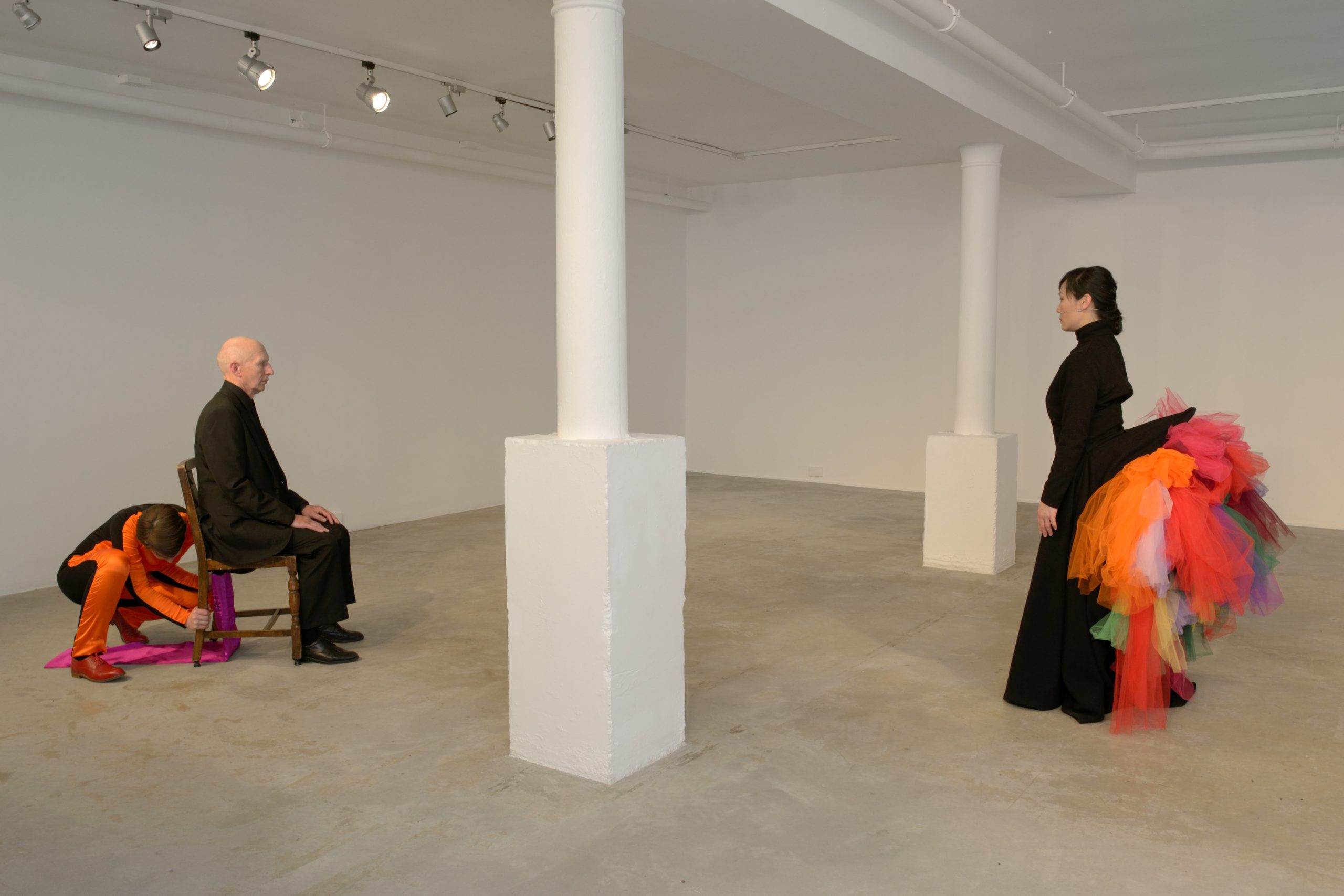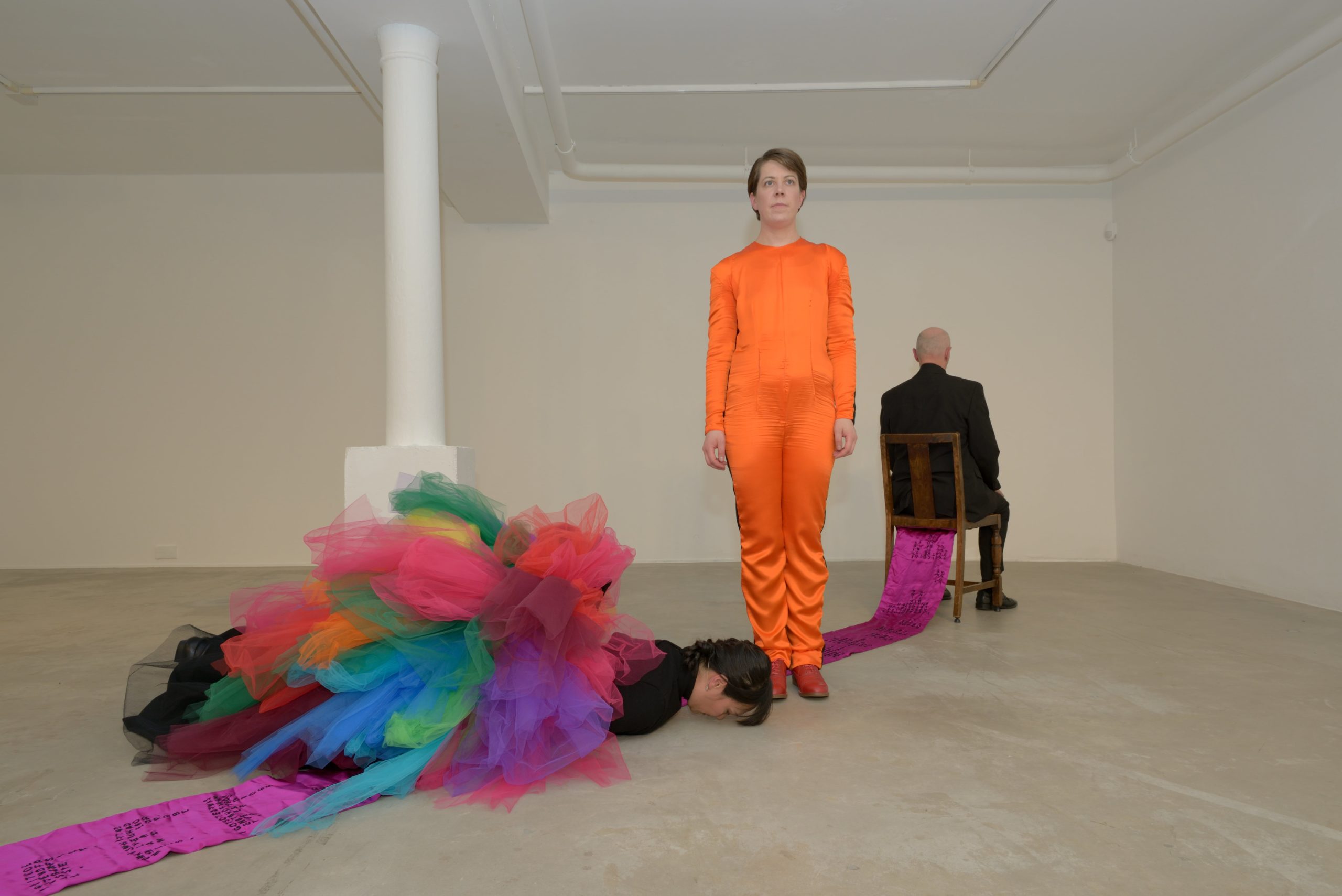Void is delighted to present Through the Front Door – the first solo exhibition on the island of Ireland by German artist Grace Schwindt. The exhibition includes a major new commissioned performance work Reading from a Ribbon.
Born in 1979 in Germany, the artist is normally based in London. She is currently participating in the Wiels artist-in-residence programme, Brussels. Schwindt works in both film and performance. Her artworks explore aspects of (German) history, emphasising social relations and ensuing questions associated with the witnessing and narrating of historical events. In the process, Schwindt’s works scrutinise the idea of an inheritance of memory and its workings, e.g. the question as to whether the discussion of historical events such as the Second World War can ever be exhausted. Schwindt’s approach to these themes is a unique and fascinating blend of traditions such as Brechtian Epic theatre, tableau vivant, and her own artistic sensibilities, which range from historical and sociological detail, to the use and meanings of space, bodies, objects and costume.
The exhibition, which is curated by Susanne Stich, shows a selection of works including the early films The Chair (2008, 10 min.) and Meeting Florchen Gordon (2008, 5 min.). Both these works explore aspects of Schwindt’s own family history in relation to the Nazi period, centring on fragmented narratives shared in casual conversation.
Schwindt’s latest work, Tenant (2012, HD Video, 78 min.), is also on show. This new film centres on a scripted dialogue that takes, as a starting point, a story about Mrs. Schumacher who was the lodger of the artist’s grandfather in Berlin during the Second World War. She was a communist and helped Vladimir Lenin travel from Switzerland to Russia in 1917 after the February Revolution broke out. In the artist’s own words the film “describes the routines that take place in a family home, such as eating together, doing homework or bathing. These routines are embedded into a wider historical and social context and get repeatedly interrupted, for example, by a performer falling down stairs at the very moment she reached the top.
The body in my work is turned into a fragile prop and in constant danger. I wish to empty institutionalised spaces of meaning. However, this doesn’t lead to neutrality but becomes again loaded with gender, age, class and race. I generally use theatrical sets for video and performance works with minimal architectural elements and props to mark a location. I place bodies in these spaces, including my own, and use a tightly scripted choreography, in which every move relates to institutionalised systems that rely on exclusion and destruction. I investigate how social relations and understandings about oneself are formed in such systems. Interviews that I conduct with individuals often serve as a starting point for fictionalised dialogues that are then delivered by different performers. Whilst trying to represent a system, I continuously deconstruct it by using the same mechanisms that I apply to build it: bodies, movements, speech, furniture, architecture and costumes.”
The exhibition also includes the newly commissioned performance Reading from a Ribbon, which, in Schwindt’s own words explores the “desires and possibilities to create equality in social relations and difficulties of being heard.” Reading from a Ribbon, which includes a cast of local and international performers, is performed only once. Thereafter, a HD video recording will be installed as a large-scale wall projection in the original performance space. Reading from a Ribbon is based on a monologue that takes the form of a letter. The text is presented on various levels: stitched onto a ribbon that is slowly unfolding, written onto a costume, and spoken by a performer. A tight choreography allows this text to unfold over a period of 20 minutes. The piece involves four performers: a female dancer (Jia-Yu Corti), a man (James King), and a young girl (Chloë Bradley), and the artist herself. These different roles also represent various possibilities of social relations implied in the text. The performers appear in isolation, but through the choreography they meet at certain points in which their mutual dependency is emphasised.
Grace Schwindt Biography
Schwindt graduated from the Slade School of Fine Art in 2009 and participated in the Associate Artists Programme at LUX in 2010. She has presented her work widely. Recent solo exhibitions include the White Columns Gallery, New York; South London Gallery,;White Chapel Gallery and the Institute of ContemporarArts, London. This year, Schwindt received the Grant to Individual Artist from the Foundation for Contemporary Arts for Performance Art, New York.
For more about Grace’s work please visit her website.
Acknowledgements
Void Gallery is supported by the Arts Council of Northern Ireland and Derry City and Strabane District Council.

